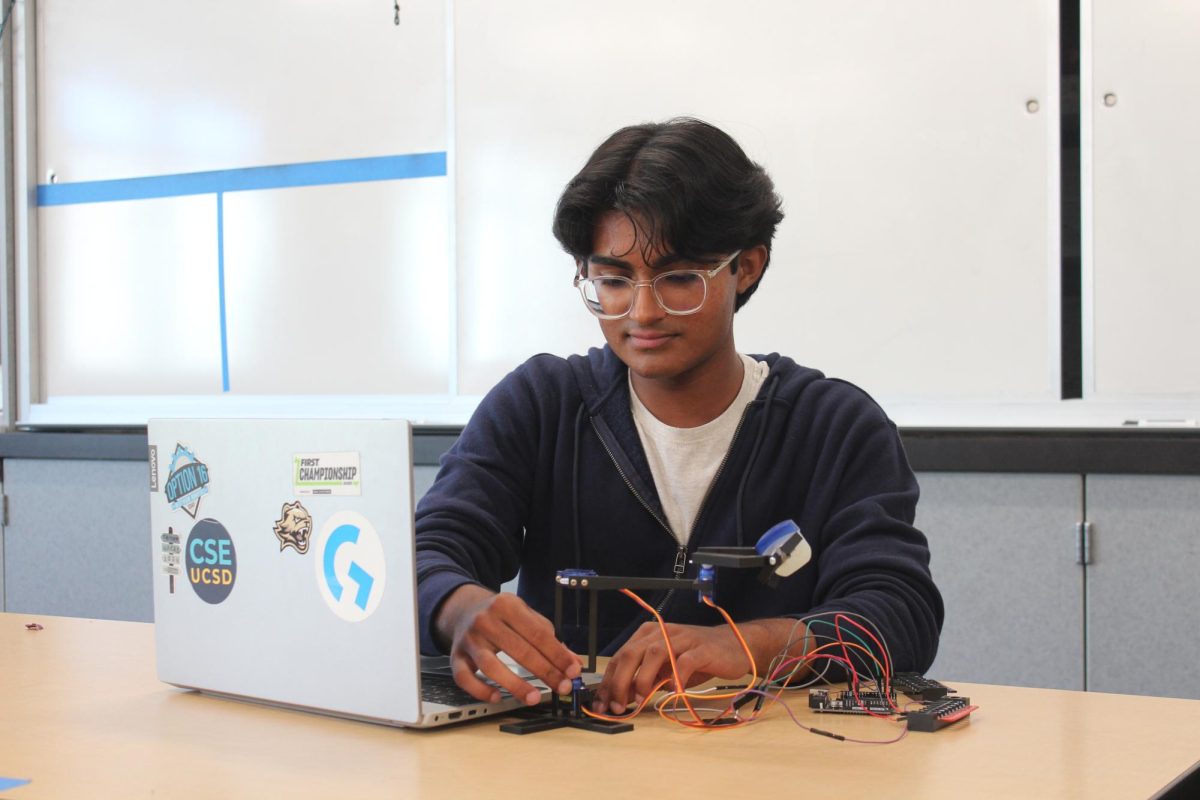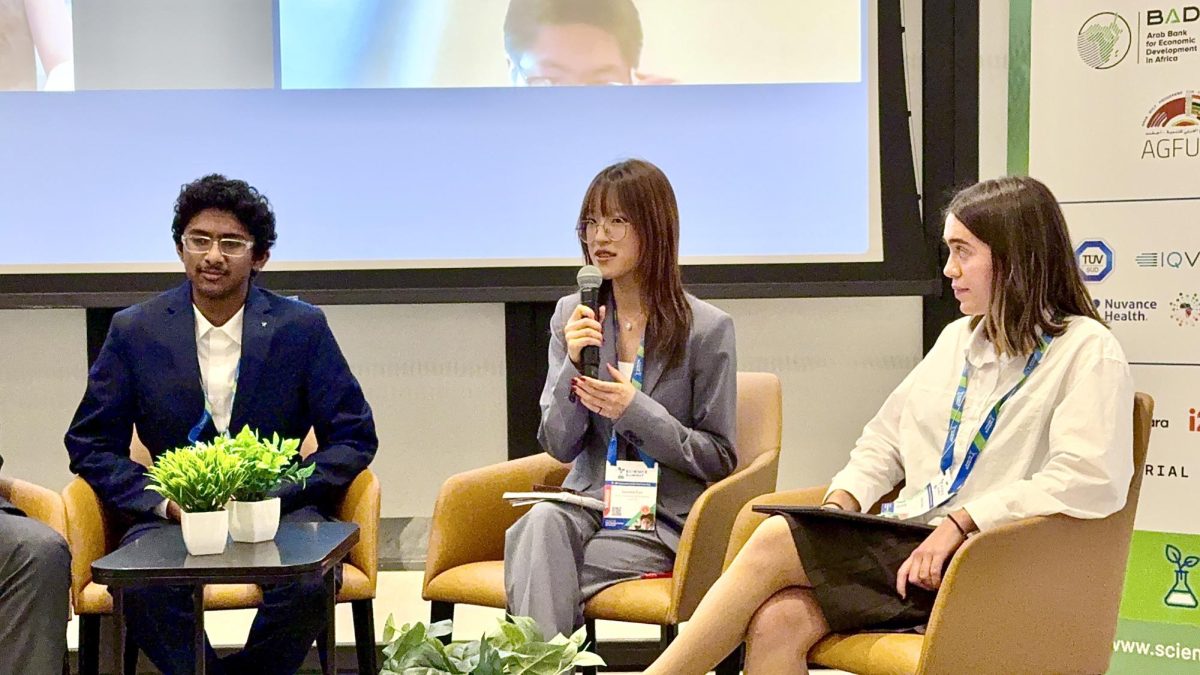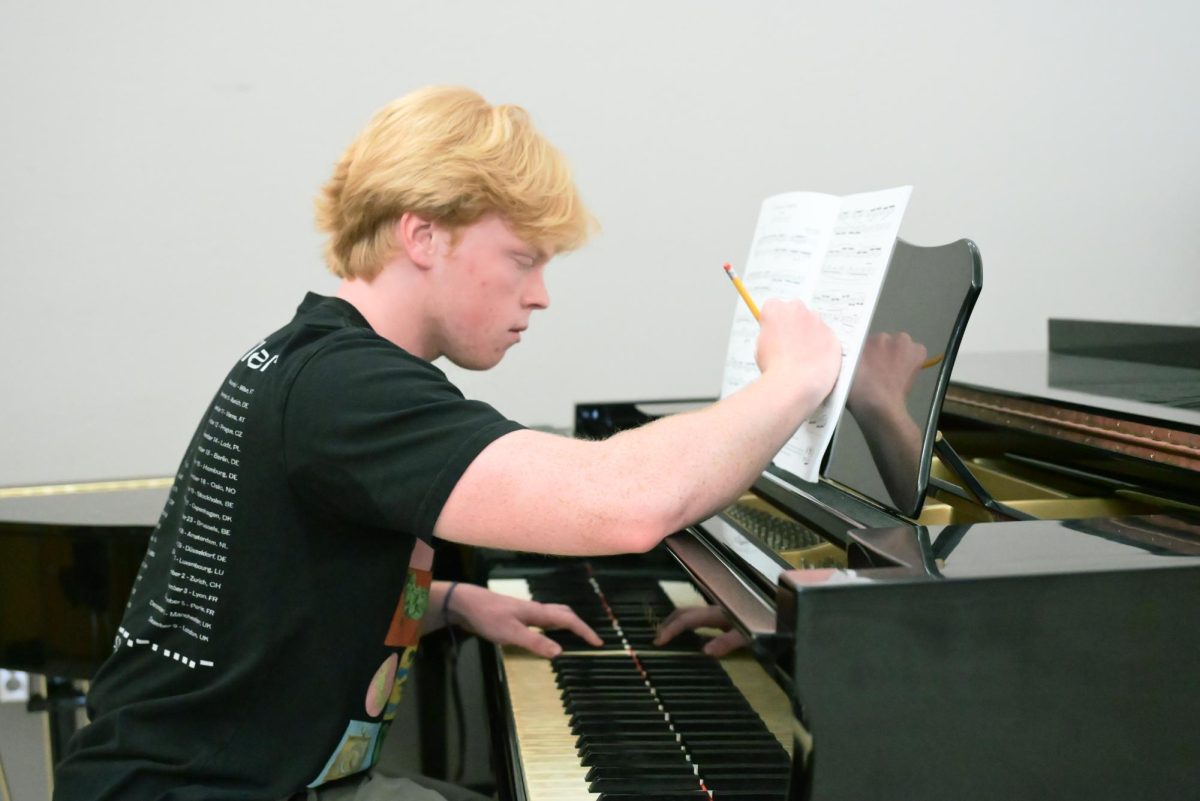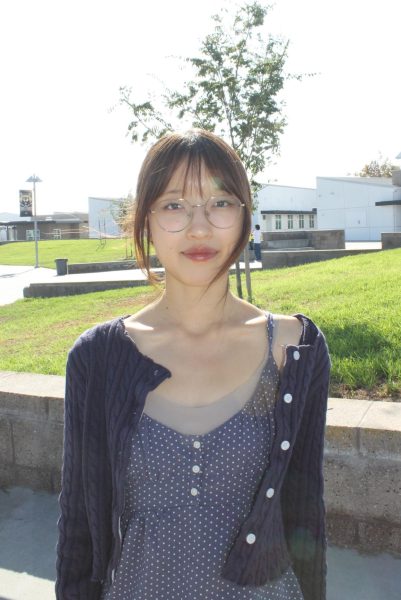With a swift swing and a loud “KIHAP!” Anderson Lai (12) demonstrated a punch and glanced behind him, smiling at his students as they enthusiastically imitated his movements. For the past year, Lai has taught taekwondo through the Ability Development program for special needs students. With 12 years of taekwondo under his belt, Lai always looks forward to sharing his expertise with his students.
Lai teaches one-hour lessons weekly with five to seven students at a time. The students he worked with were as young as four and had been diagnosed with conditions such as autism, down syndrome, ADHD, and dyspraxia, a condition that affects motor skills.
Since the students are often very hyper, he starts out every class with a quick run around the studio and a stretching routine.
“We start with teaching them the basics of taekwondo, like teaching them how to throw a punch or maybe holding a target for them to kick,” Lai said. “We try to have them be very vocal and count out loud in English or Korean.”
Sometimes the students complete obstacle courses as well, refining their motor skills. Toward the end of class, Lai focuses on physical training, consisting of exercises such as push-ups or sit-ups.
Despite his extensive experience, when Lai’s instructor proposed the idea of a special needs taekwondo program to him a year ago, he was unsure of how he would approach teaching the class.
“A lot of the time I was debating, ‘Is what I’m doing right?’” Lai said. “There was a lot of doubt, but it’s part of the learning process. As I’m teaching, I’m learning at the same time.”
After a year of teaching the class, Lai said he improved his teaching methods.
“Repetition and patience are key to helping students remember and understand the lessons,” Lai said. “You can’t shortcut your way through the process or show frustration when they don’t listen to you. You have to go the extra amount to connect with them and ensure that their experience is meaningful and positive.”
Over time, Lai began to see drastic changes in the students’ willingness and attitude.
“After they get more comfortable, the kids get louder and become more receptive to our help,” Lai said. “Sometimes in the beginning they are very timid or don’t want to participate at all, but now we see gradual improvements. They become more involved and communicate more with each other. It really helps [the students] socially, not just physically and mentally.”
Lai even had a parent thank him, as he helped her son make a friend and form more social connections.
“I was really touched and a little emotional about it,” Lai said. “It was the first clear instance where I realized I had made an impact on someone’s life, so I felt even more motivated.”
In the future, Lai plans to use the patience and dedication he gained from teaching taekwondo to pursue his dream of working in the healthcare industry.
“You need to understand these students in order to teach them properly and build these connections with them,” Lai said. “That’s the same thing for a medical profession. If you understand the patients, you can treat them better, you can diagnose them better, and you can overall help patients live longer and healthier lives.”
Lai also said he hopes to encourage others to be more confident in themselves.
“Typically, students think that you need to be older or be a master to teach everyone,” he said. “I hope I can show that if students put enough time and dedication into what [they] really enjoy, then you can be what you aspire to be. It’s just hard work, dedication, and perseverance.”






